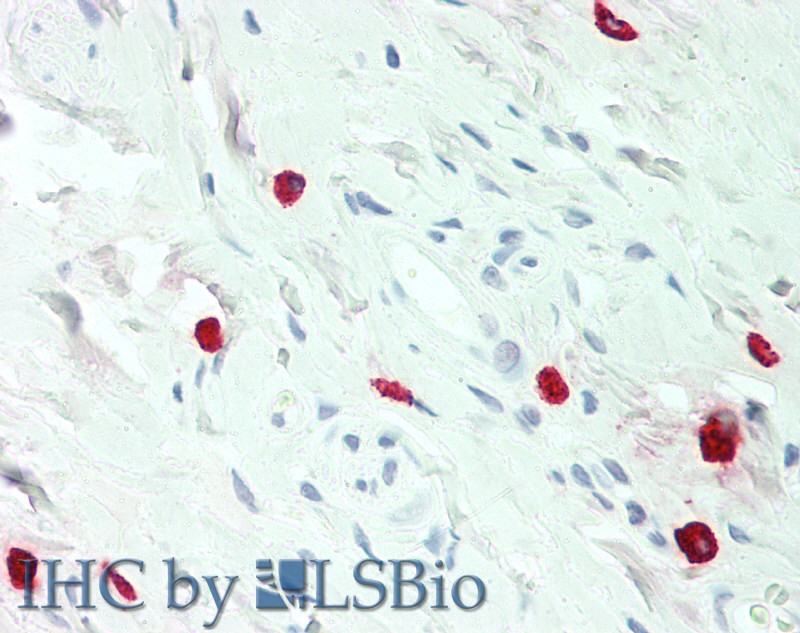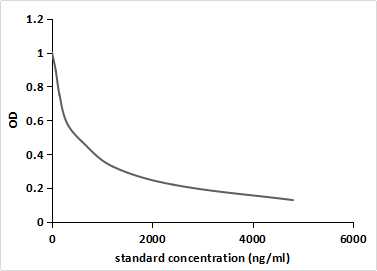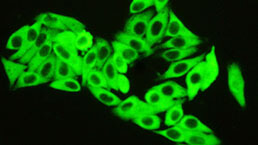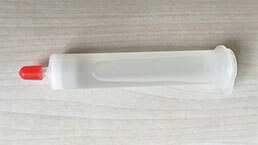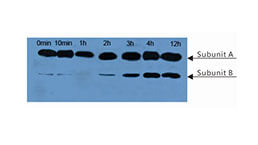Monoclonal Antibody to Histamine (HA) 

Histamin
- UOM
- FOB US$ 125.00 US$ 293.00 US$ 418.00 US$ 1,045.00 US$ 4,180.00
- Quantity
Overview
Properties
- Product No.MAA927Ge21
- Organism SpeciesPan-species (General) Same name, Different species.
- ApplicationsELISA;IHC
If the antibody is used in flow cytometry, please check FCM antibodies.
Research use only - DownloadInstruction Manual
- CategorySignal transductionInfection immunity
- SourceMonoclonal antibody preparation, Host Mouse
- Ig Isotype IgG2b Kappa, Clone Number 8-C2
- PurificationProtein A + Protein G affinity chromatography
- LabelNone
- Immunogen CPA927Ge11-BSA Conjugated Histamine (HA)
- Buffer Formulation0.01M PBS, pH7.4, containing 0.05% Proclin-300, 50% glycerol.
- TraitsLiquid, Concentration 1mg/mL
Sign into your account
Share a new citation as an author
Upload your experimental result
Review

Contact us
Please fill in the blank.
Specifity
The antibody is a mouse monoclonal antibody raised against HA. It has been selected for its ability to recognize HA in ELISA and CLIA.
Usage
Enzyme-Linked Immune Immunosorbent: 11.57µg/mL;
Immunohistochemistry: 5-20µg/mL;
Optimal working dilutions must be determined by end user.
Storage
Store at 4°C for frequent use. Stored at -20°C in a manual defrost freezer for two year without detectable loss of activity. Avoid repeated freeze-thaw cycles.
Stability
The thermal stability is described by the loss rate. The loss rate was determined by accelerated thermal degradation test, that is, incubate the protein at 37°C for 48h, and no obvious degradation and precipitation were observed. The loss rate is less than 5% within the expiration date under appropriate storage condition.
Organism Species More: Homo sapiens (Human)Giveaways
Increment services
Citations
- PEST-domain-enriched tyrosine phosphatase and glucocorticoids as regulators of anaphylaxis in micePubmed: 21981059
- Comparison of sensitization between β-lactoglobulin and its hydrolysatesDigital: 875
- Integrative analysis of proteomics and metabolomics of anaphylactoid reaction induced by Xuesaitong injectionPubMed: 26372445
- Expression of inducible nitric oxide synthase in mast cells contributes to the reCavia (Guinea pig )lation of inflammatory cytokines in irritable bowel syndrome with diarrheaPubmed:26940641
- Induction of immune responses and allergic reactions in piglets by injecting glycinindoi:1828051X.2016.1144488
- Effects of Dectin-1 on the mast cells in allergic conjunctivitis and its underlying mechanismfiles:ijcep0019305.pdf
- Proteomics Study on Nonallergic Hypersensitivity Induced by Compound 4880 and Ovalbuminpmc:PMC4734762
- Evaluation of anaphylactoid constituents in vitro and in vivo.pubmed:27984711
- Ultraviolet A photosensitivity profile of dexchlorpheniramine maleate and promethazine-based creams: Anti-inflammatory,antihistaminic, and skin barrier protection propertiesDOI: 10.1111/jocd.12349
- Adipose Tissue-Derived Mesenchymal Stem Cell Modulates the Immune Response of Allergic Rhinitis in a Rat ModelPubmed: 30781605
- Metabolomics analysis of baicalin on ovalbumin-sensitized allergic rhinitis rats
- MOTION SICKNESS INDUCES PHYSIOLOGICAL AND NEURONAL ALTERATIONS IN MOUSE MODEL
- Artemisia annua sublingual immunotherapy for seasonal allergic rhinitis: a randomized controlled trialPubmed: 32030780
- Animal models for analysis of hypersensitivity reactions to Shuanghuanglian injectionPubmed: 32302806
- Protective effect of Asarum sieboldii essential oil on ovalbumin induced allergic rhinitis in ratPubmed: 32395767
- A vaccine-based nanosystem for initiating innate immunity and improving tumor immunotherapyPubmed: 32332752
- CCR3‑shRNA promotes apoptosis and inhibits chemotaxis and degranulation of mouse mast cellsPubmed: 32742345
- Multiplexed fluorescence immunoassay combined with magnetic separation using upconversion nanoparticles as multicolor labels for the simultaneous detection of …Pubmed: 32892931
- Study of some hematological and immunological parameters associated with the infection of intestinal parasites in the holy city of Kerbala, Iraq
- Pharmacokinetics and safety of TCMCB07, a melanocortin-4 antagonist peptide in dogs34014033





